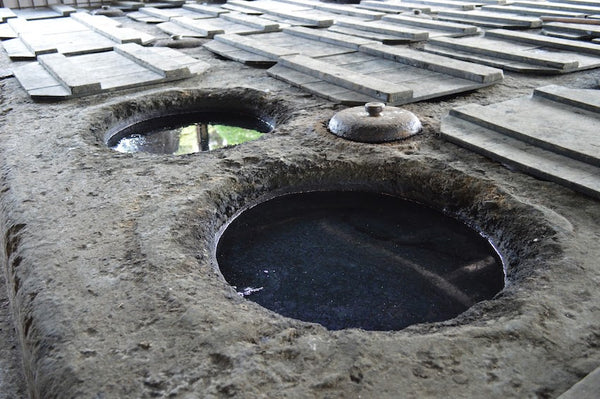Exploring the Rich Heritage of Renowned Natural Indigo Fabrics and Their Unique Craftsmanship
The Timeless Allure of Natural Indigo Fabric
In an era where fast fashion dominates the textile industry, the allure of traditional materials like natural indigo fabric stands out as a symbol of craftsmanship, culture, and sustainability. Known for its captivating deep blue hue and rich historical significance, indigo fabric has been woven into the fabric of societies around the world for centuries. This article explores the journey of natural indigo, its intricate dyeing process, and its resurgence in contemporary fashion.
The History of Indigo
Indigo dye has been used for over 6,000 years, with its roots traced back to ancient civilizations in places like India, Egypt, and China. The plant responsible for this vibrant color, Indigofera tinctoria, thrives in tropical and subtropical climates. Historically, indigo was a highly sought-after commodity, often referred to as “blue gold” due to its value in trade. In regions like West Africa and India, indigo farming became a vital part of economic and cultural life, with local artisans developing unique methods of dyeing.
Indigo’s significance is not merely aesthetic; it has spiritual implications as well. In many cultures, the color blue has been associated with protection, healing, and spirituality. For instance, in ancient Egypt, indigo-dyed fabrics were used in mummification as a means to guide the deceased in the afterlife.
The Dyeing Process
Creating natural indigo fabric is a labor-intensive process that showcases the artisanal skills passed down through generations. The journey begins with the indigo plant, which is harvested and fermented to extract the dye. Unlike synthetic dyes, which can be produced quickly and cheaply, natural indigo requires time, patience, and expertise.
The fermentation process is crucial to achieving the right shade of blue. The leaves are soaked in water, allowing the fermentation process to occur over several days. The resulting liquid, known as “indigo vat,” is a rich, deep blue color.
Dyeing involves submerging the fabric into the vat, allowing it to absorb the dye. As the fabric is exposed to air, it undergoes a fascinating transformation, turning from greenish-yellow to deep blue. This color change occurs due to oxidation, a response of the indigo compounds when exposed to oxygen. To achieve deeper shades, the fabric can be dyed multiple times, with each dip resulting in a richer color.
famous natural indigo fabric

The Craftsmanship Behind Indigo
The artistry of indigo dyeing varies from region to region, with each culture imbuing its own styles and techniques into the fabric. In Japan, for instance, the traditional art of “shibori” involves intricate tie-dye methods to create stunning patterns in the indigo fabric. Meanwhile, in West Africa, the use of mud and other natural materials contributes to unique, bold designs.
The craftsmanship involved is not merely a means of production but a form of storytelling. Each piece of indigo fabric can represent the identity, values, and heritage of a community. The patterns and designs often symbolize various cultural narratives, embodying the spirit of the artisans who create them.
A Resurgence in Sustainability
Recently, there has been a growing interest in sustainable fashion practices, giving natural indigo fabric a new lease on life. Today's consumers are increasingly aware of the environmental impact of their clothing, pushing brands to reconsider their sourcing methods. Natural indigo, being biodegradable and less harmful to the environment compared to synthetic alternatives, has emerged as a favorable choice.
Fashion designers and brands are now seeking out natural indigo artisans to create contemporary collections that honor traditional practices. This blend of old and new not only preserves cultural heritage but also promotes ethical consumption. By investing in handcrafted pieces, consumers contribute to the livelihood of artisans and the survival of ancient crafts.
Conclusion
Natural indigo fabric is more than just a beautiful textile; it embodies a rich history and a commitment to sustainable practices. As the world moves toward a more conscious approach to fashion, the timeless appeal of indigo continues to captivate hearts and minds. With each stitch and dye, natural indigo reminds us of the beauty of tradition and the importance of protecting our planet for future generations. Embracing this exquisite fabric is not merely a style choice; it is a celebration of heritage and a step towards a more sustainable future.
-
Sulphur Black Dyes in Daily Use
NewsMay.07,2025
-
Indigo Dyeing for Daily Life
NewsMay.07,2025
-
Indigo Dye Production and Its Growing Demand
NewsMay.07,2025
-
Color That Lasts
NewsMay.07,2025
-
Bromo Indigo for Modern Use
NewsMay.07,2025
-
Blue From Nature
NewsMay.07,2025
-
The Timeless Color in Fashion and Textiles
NewsApr.10,2025

Sulphur Black
1.Name: sulphur black; Sulfur Black; Sulphur Black 1;
2.Structure formula:
3.Molecule formula: C6H4N2O5
4.CAS No.: 1326-82-5
5.HS code: 32041911
6.Product specification:Appearance:black phosphorus flakes; black liquid

Bromo Indigo; Vat Bromo-Indigo; C.I.Vat Blue 5
1.Name: Bromo indigo; Vat bromo-indigo; C.I.Vat blue 5;
2.Structure formula:
3.Molecule formula: C16H6Br4N2O2
4.CAS No.: 2475-31-2
5.HS code: 3204151000 6.Major usage and instruction: Be mainly used to dye cotton fabrics.

Indigo Blue Vat Blue
1.Name: indigo blue,vat blue 1,
2.Structure formula:
3.Molecule formula: C16H10N2O2
4.. CAS No.: 482-89-3
5.Molecule weight: 262.62
6.HS code: 3204151000
7.Major usage and instruction: Be mainly used to dye cotton fabrics.

